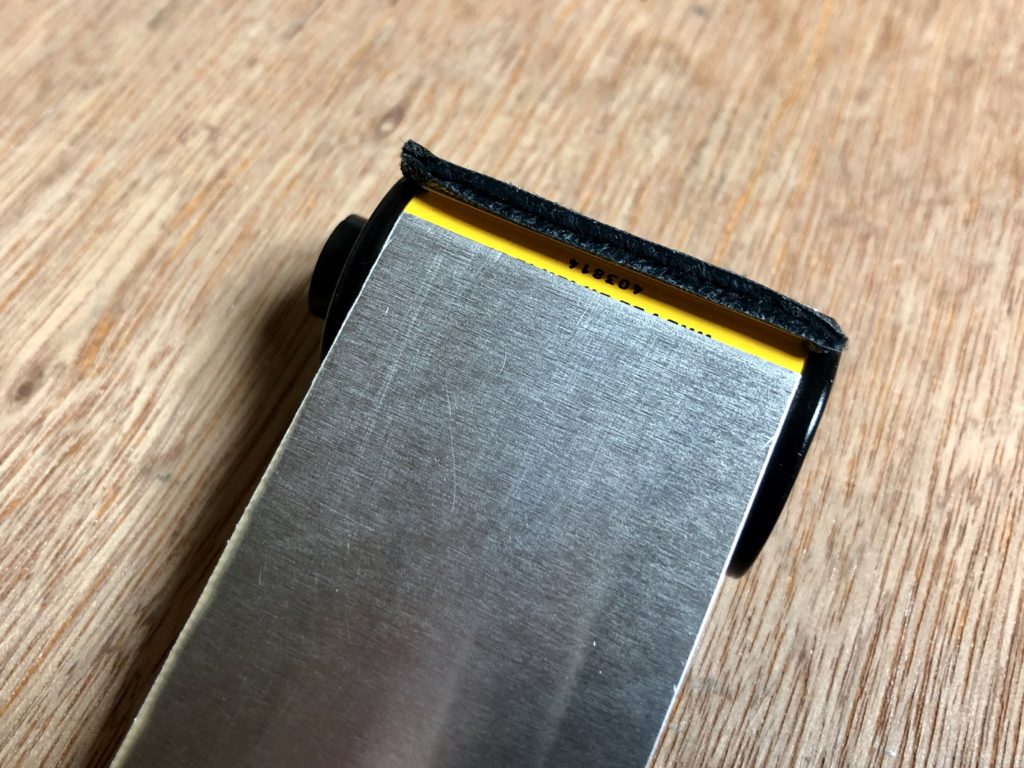Problem: I own a Pentax P30t (and P30n since writing) Film SLR which only allows ISO to be set via DX encoding on the film canister. If no DX code is present, the ISO defaults to 100.
Solution: There are all sorts of existing solutions involving tin-foil, stickers or scratching the canister but I wanted a more permanent re-usable solution and came up with this ‘shim’ idea.
The method is as follows, with simple explanation in the captions where needed:











Additional notes:
- 0.4mm aluminium sheet was the thinnest they had in my local hobby store. I plan on trying .3mm sometime soon.
- Choice of tape matters. Good quality soft PVC tape can be punctured by the pins in the camera, and is also quite thick. Cheap electrical tape is probably better. Best would be to block-out the code with etch-primer and a suitable hard shell paint I think. Future version

- The length of the piece of aluminium’s important as you want it to butt-up to the inside corner to prevent the shim rotating when the film is inserted.
- Choice of former, in my case a socket, is a bit hit and miss. You want to over curl it and let it spring back to the final size.
- I taped the sheet to the former before rolling with duck-tape.
Testing the shim:
For a camera like the P30t, there’s no way to read-back or verify which ISO value has been set by a DX code. i.e there’s no LCD display. So to check that the shim is working:
- Insert a factory canister with a DX code on it that differs from the one on the shim and take a light meter reading against a constant light source. A PC/Laptop screen showing a white background is a good one. Note the reading.
- Add the shim to the canister, and take another reading, noting it.
- Compare the readings with what you’d expect to see.
For example let’s say the factory canister has a 100 ISO DX code on it, and the reading is 1/60th at ƒ8. If the shim has a 400 ISO code on it, you would expect there to be a difference of 2 stops in the reading. So 1/250th at ƒ8 or 1/60th at ƒ16.
This process inspired me to design a t-shirt, and ended up in a very tiny t-shirt collection here: https://35mmtees.uk
Alternatively you can get the design on a Mug!
If you have questions, corrections or criticisms please leave a comment below. Or just let me know what you thought with a click/tap on a thumb:



 (No Ratings Yet)
(No Ratings Yet)